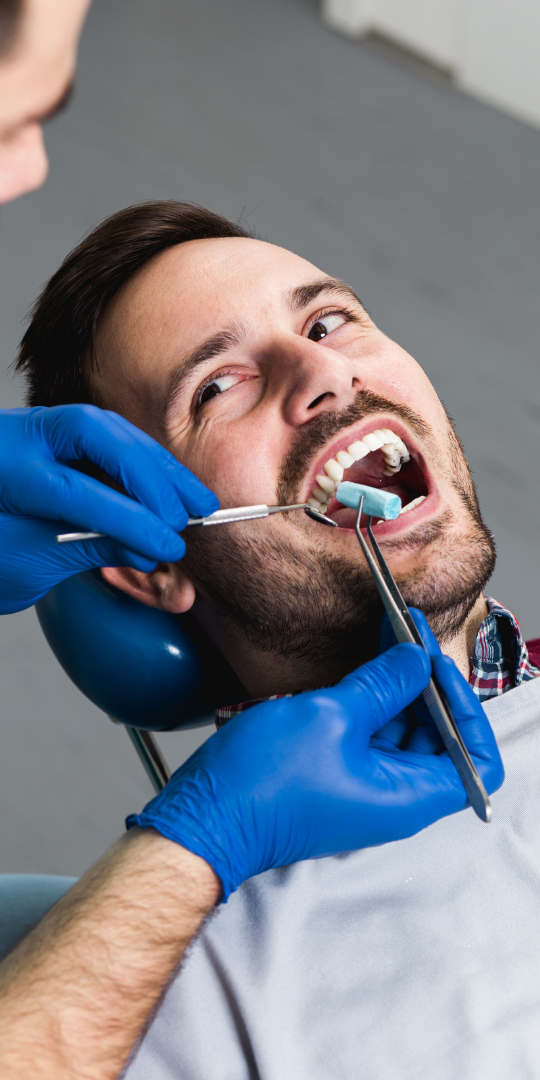Bonding Treatment
Make an Appointment
Online Schedule
IntroductionBonding Treatment
A beautiful smile is important to everyone. But sometimes people are not satisfied with their smiles for various reasons. These reasons are mostly related to teeth. Crowding in tooth alignment, discolored teeth, gaps between teeth, and disproportionate tooth sizes are some of the factors that impair tooth and smile aesthetics.
There are many different methods to solve the factors that disrupt these dental aesthetics. However, the old methods could cause people to look away from the treatments due to the possibility of damaging the teeth to some extent and being costly methods. With the advent of bonding treatment, it is now possible to solve dental aesthetic problems in a much more practical and easy way without these reservations.
Turquoisedent, with its comfortable clinical environment and qualified staff, produces solutions in the light of the latest technologies for more beautiful smiles for its patients in all its branches.
What is bonding?
The treatment method in which teeth with some aesthetic problems are restored using composite filling materials without any abrasion is called bonding. Bonding is also referred to as composite lamina treatment. In short, it can be defined as aesthetic fillings made to the anterior teeth.

IntroductionWhat are the advantages of bonding treatment?
One of the biggest advantages is that there is no abrasion or reduction in the teeth for bonding treatment. In this way, patients will have more beautiful teeth, while their healthy teeth will not be damaged.
Another advantage for patients is that the treatment is extremely practical and completed in a short time. Depending on the number of teeth to be bonded, the entire treatment can be completed in a single session, which will take a few hours at most.
If there are decayed tissues that need to be cleaned in the tooth to be bonded, it may be necessary to apply anesthesia. Apart from this, no anesthesia is required for the bonding application. This is a great advantage, especially for patients who have a fear of injections.
One of the advantages of bonding treatment is that it costs less than porcelain laminates and other porcelain applications.
The implementation of changes in the expectations of the patients during the treatment greatly increases the satisfaction rate at the end of the treatment.
It is also among the advantages that bonding applications can be repaired when damaged for any reason.
When is bonding not preferred?
- In cases where there are too many crooked teeth, bonding applications may be insufficient, therefore they are not preferred.
- In cases with large caries, coating applications are preferred instead of bonding.
- Priority is given to whitening treatments for teeth with discoloration that can respond positively to whitening treatments.
- Bonding is not preferred in patients with habits such as clenching, grinding, and nail-biting, where excessive force is applied to the anterior teeth. If bonding is to be applied, these habits must be eliminated first.
How long does the bonding treatment take and how is it done?
Bonding treatment time varies according to the condition and number of the tooth. The most accurate time is determined after a Dentist examination.
- First of all, treatment requirements and oral hygiene are determined with a detailed examination of the patient’s mouth.
- If there are deficiencies related to oral hygiene, related attempts are made. If there is a need for treatment such as tartar cleaning, gum treatments, or cleaning of decayed teeth, these treatments are carried out.
- If there is any disproportion in the gums of the teeth that are planned to be bonded, these are arranged with minor surgical interventions and the teeth are made ready for bonding.
- The color of the existing teeth in the mouth is determined and the color of the composite materials to be used in the bonding process is selected accordingly.
- With a process called etching, tooth surfaces are roughened at the micron level to increase the bonding of the composite material.
- Bonding agents called bonds are applied as a thin layer to the roughened tooth surfaces and irradiated.
- The composite filling material is shaped by applying a thin layer to the tooth surface. During this shaping, the patient’s aesthetic expectations and needs are taken into account. Afterward, composite laminates are fixed by irradiation.
- At this stage, the patient’s opinion is also taken and changes are applied if desired.
- Composite lamina surfaces are smoothed and polished with polishing processes called polishing. The bonding application is completed in this way.
Does the bonding last long?
Bonding applications have a high level of durability just like other composite fillings. However, due to their thin structure, they should not be exposed to excessive force. For this reason, it is recommended to avoid behaviors such as opening and consuming nuts with bonded teeth and biting hard objects.
The life of the bonding application varies depending on the oral hygiene and habits of the patient. Bonding treatment with good oral care and careful use can last for a very long time.
From time to time, intense consumption of substances such as tea and coffee can cause discoloration, and from time to time, deterioration of oral hygiene and plaque accumulations may cause discoloration on the bonding. These can be easily removed by maintenance and polishing processes to be carried out under the supervision of a physician. For such reasons, physician controls to be made twice a year are important for the longevity of the bonding application.
What are the differences between bonding and porcelain laminate?
There are some differences between bonding treatments and porcelain laminates, which have very similar application areas.
One of the biggest differences between porcelain laminates and bonding applications is that they have different aesthetic properties due to the structure of the materials used. Porcelain laminates have a smoother surface compared to bonding applications. There are also differences between the two applications in terms of transmitting and reflecting light. Because of these, porcelain laminates give aesthetically better results than bonding applications.
In addition, bonding treatments are more advantageous than porcelain laminates in terms of cost and application time.
When the applications are damaged for any reason, bonding applications can be easily repaired, while porcelain laminates need to be rebuilt. This is among the situations where bonding applications are advantageous.
In which cases is bonding done?
- Bonding applications are a preferred treatment alternative for tooth discoloration that cannot be removed by whitening treatments. Depending on the properties of the composite material used, excessive coloration can be covered even by adding a thin layer.
- A bonding treatment can be applied in cases where the tooth enamel has structural defects and roughness due to genetic or other reasons. Rough tooth surfaces are more prone to both discoloration and cavities, and they can create an aesthetically disturbing appearance. Solving these problems is quite easy with bonding applications.
- In the presence of superficial dental caries, bonding treatment is used to complete the tooth both functionally and aesthetically after the caries are cleaned.
- Bonding can be applied in small-scale tooth fractures and enamel cracks, both to prevent problems such as discoloration and decay in the fracture and crack lines, and to correct the appearance created by these fractures and cracks.
- In cases where there are gaps called diastema between the front teeth, bonding can be applied if the patient does not prefer orthodontic treatment. In addition, if diastemas are formed because the teeth are too small to provide aesthetic adequacy of orthodontic treatment, bonding application will be one of the ideal methods for treatment.
- Minor deformities in the anterior teeth can be achieved with bonding applications without the need for porcelain applications.
- In cases where the sizes of the anterior teeth are incompatible, bonding treatments can be used to equalize the sizes.
- In cases where the length of the teeth is short, both the aesthetic appearance is not sufficient and the people may look older than they are. This situation, which negatively affects smile aesthetics, can also be corrected with bonding.
- Small-scale tooth crowding, where the patient does not prefer orthodontic treatment, that is, wire treatment, can be corrected with bonding and the teeth can be given a smoother appearance.








